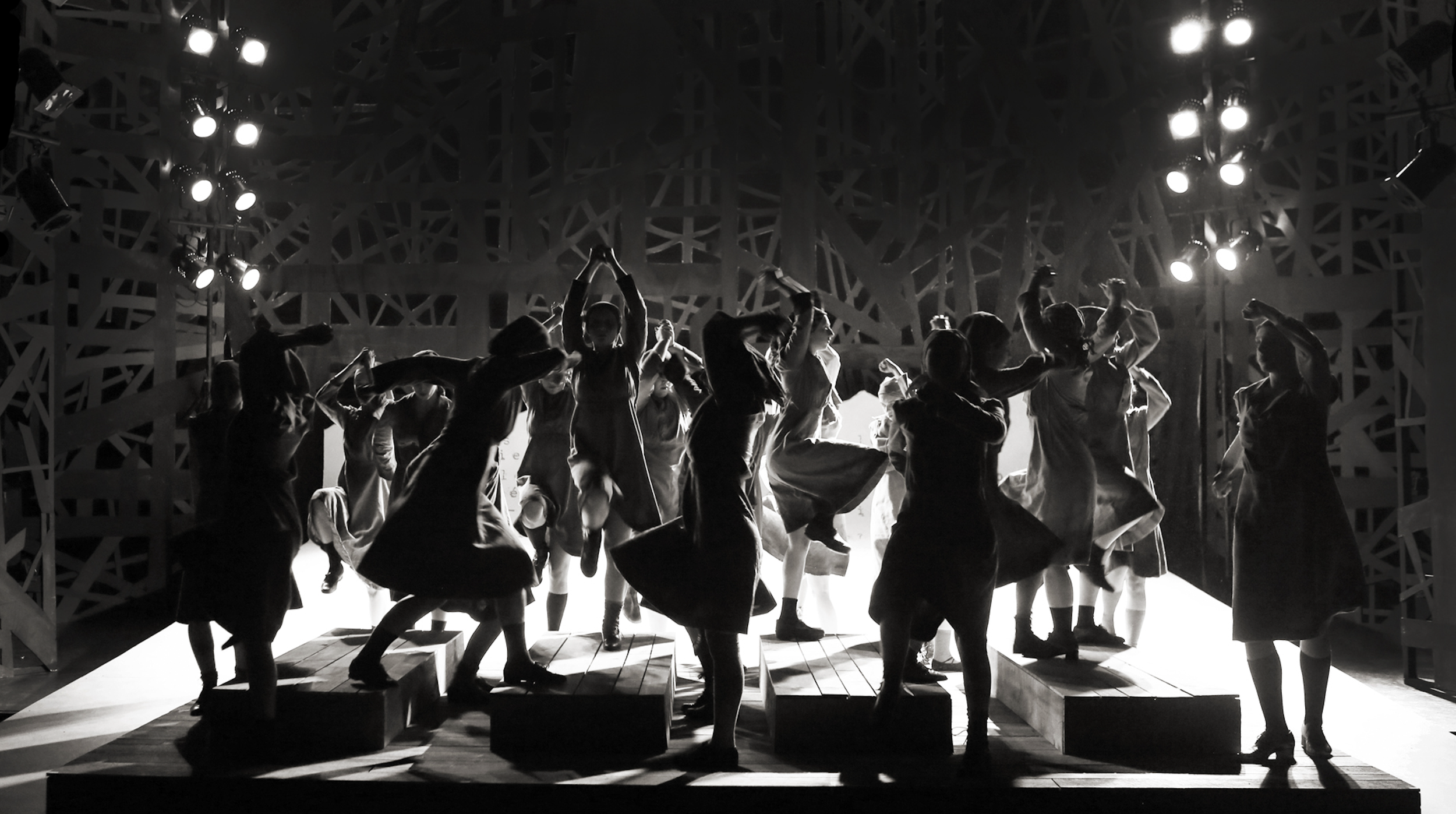On October 18th, less than 2 weeks before Halloween, Skidmore’s Blackbox Theater opened Neighborhood 3: Requisition of Doom by Jennifer Haley, a psychological thriller about teenagers addicted to a video game that becomes increasingly unnerving and surreal. To learn more about the show and the process behind it, I talked with director Dennis Schebetta, who describes the show as, “if the show The Twilight Zone, and [the video game] Resident Evil, which is known for horror elements and jumpscares, had a baby.”
According to Schebetta, “[Haley] is not just giving us a dark psychological thriller intended to mess with our minds, but she also explores addiction in many forms - this idea of escape and why people might want to escape.”
When asked about what inspired him to select this show, Schebetta replied, “I have always had a fascination with examining our relationship to technology, maybe because I’m Gen X and grew up playing video games, from the first Atari to Nintendo ( I even play a little bit of Xbox now) but my generation also witnessed how the internet exploded and became more a part of our society.”
Schebetta additionally attributes a much heavier reality to his choosing this show: “I deliberately look for playwrights who are under-represented and sadly, that includes all female playwrights (who, according to the Count by the Dramatist Guild) account for about 31% of all productions in the U.S.”
Tying back to the show’s haunting themes, Schebetta describes Neighborhood 3 as “a fun ride disguised as psychological horror but underneath examines issues of addiction and the family dynamic, whether that’s alcohol addiction or video games.” The show fits perfectly with the spooky season, which also played a role in Schebetta’s selection of the show. “I’ve never directed a show where I had to try to scare an audience, and since this opens right before Halloween, I thought that would be a great challenge for us,” he continues.
During rehearsals for this surrealist show, Schebetta detailed how “there are some shifts away from realism into a more abstract setting, but the actors need to be grounded in some kind of truth, particularly the relationships to each other.” To prepare for the roles, the cast “focused initially on building a sense of ensemble which involves playing a lot of games (the show is after all about playing a game).”
However, this show is not without its creative liberties. In the original play, Schebetta describes how “one actor would play all of the “types” – there is a mother type, a father type, a son type, and a daughter type.” Instead, while some actors do play multiple roles, the “types” are divided up to create a larger cast. Due to the minimal set of the show, the company relies on “the actors' imagination” to “[define] the playing space and [build] the world of the neighborhood.”
Furthermore, Schebetta also commented on his favorite aspect of the show’s production process by stating: “I have been really excited about how we are implementing design aspects and working together to collaborate so that the performers and the design work together seamlessly.” He continues by concluding that the show’s behind-the-scenes process “is a very cinematic or videogame kind of show, so there is a lot of emphasis on how design will amplify the storytelling.”
Neighborhood 3: Requisition of Doom will be showing from October 18th - 23rd. If you are interested in attending, tickets are available for purchase here.
